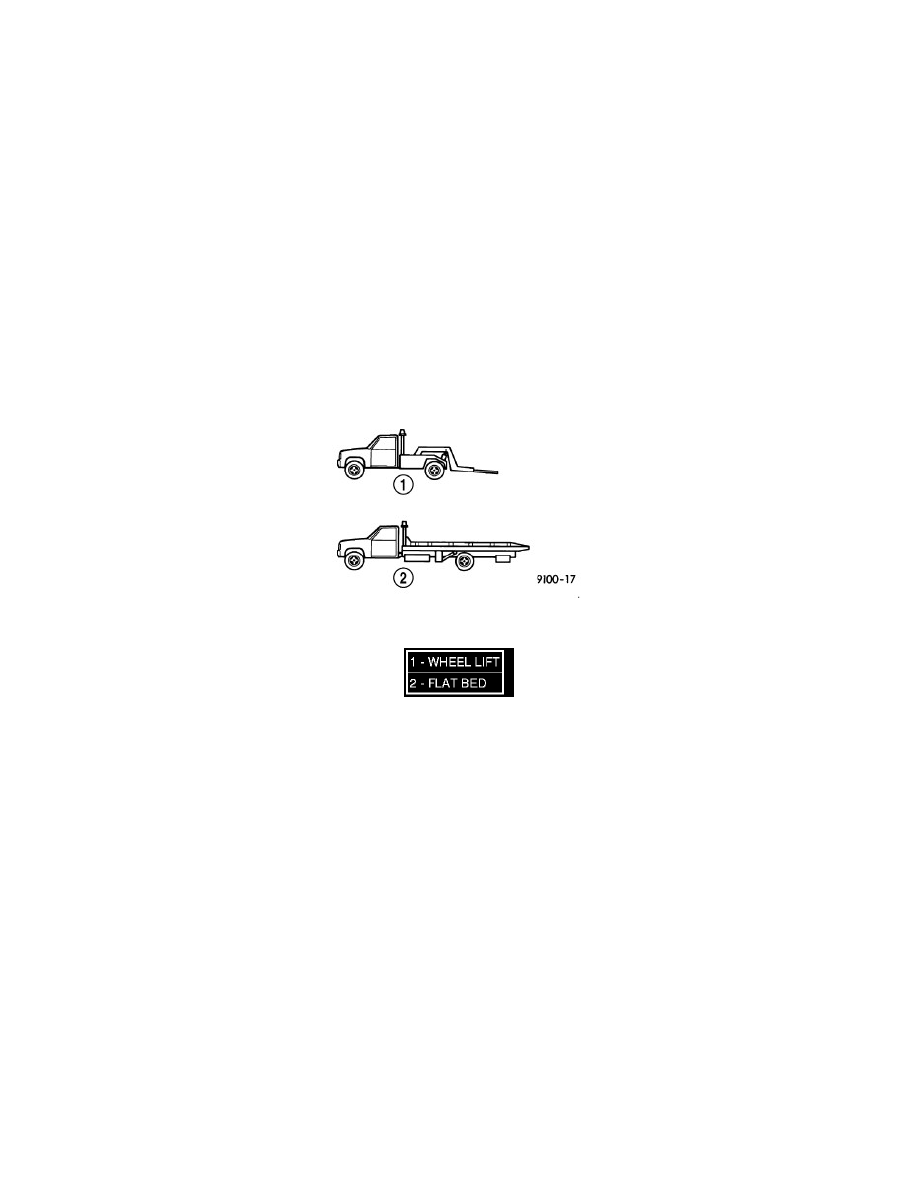Grand Caravan V6-3.6L (2011)

Towing Information: Service and Repair
STANDARD PROCEDURE - TOWING, Vehicle
WARNINGS AND CAUTIONS
WARNING: Do not allow towing attachment devices to contact the fuel tank or lines, fuel leak can result.
-
Do not lift or tow vehicle by front or rear bumper.
-
Do not go under a lifted vehicle if not supported properly on safety stands.
-
Do not allow passengers to ride in a towed vehicle.
-
Use a safety chain that is independent from the towing attachment device.
Failure to follow these instructions may result in possible serious or fatal injury.
CAUTION: Do not damage brake lines, exhaust system, shock absorbers, sway bars, or any other under vehicle components when attaching
towing device to vehicle.
-
Do not secure vehicle to towing device by the use of front or rear suspension or steering components.
-
Remove or secure loose or protruding objects from a damaged vehicle before towing.
-
Refer to state and local rules and regulations before towing a vehicle.
-
Do not allow weight of towed vehicle to bear on lower fascia, air dams, or spoilers.
RECOMMENDED TOWING EQUIPMENT
RECOMMENDED TOWING
To avoid damage to bumper fascia and air dams use:
-
FWD vehicles, use of a flat bed towing device or a wheel lift (1) is recommended.
-
AWD vehicles, a flat bed towing device (2) or a wheel lift and towing dolly is recommended.
When using a wheel lift towing device, be sure the disabled vehicle has at least 100 mm (4 in.) ground clearance. If minimum ground clearance cannot be
reached, use a towing dolly. If a flat bed device is used, the approach angle should not exceed 15 degrees.
GROUND CLEARANCE
CAUTION: If vehicle is towed with wheels removed, install lug nuts to retain brake drums or rotors.
A towed vehicle should be raised until the lifted wheels are a minimum 100 mm (4 in.) from the ground. Be sure there is at least 100 mm (4 in.)
clearance between the tail pipe and the ground. If necessary, remove the wheels from the front end of the vehicle and lower the front end closer to the
ground, to increase the ground clearance at the rear of the vehicle. Install lug nuts on wheel attaching studs to retain brake drums or rotors.
LOCKED VEHICLE TOWING
When a locked vehicle must be towed with the front wheels on the ground, use a towing dolly or flat bed hauler.
FLAT TOWING WITH TOW BAR
-
Three speed automatic transaxle vehicles can be flat towed at speeds not to exceed 40 km/h (25 mph) for not more than 25 km (15 miles). The
steering column must be unlocked and gear selector in neutral.
-
Four speed electronic automatic transaxle vehicles can be flat towed at speeds not to exceed 72 km/h (44 mph) for not more than 160 km (100
